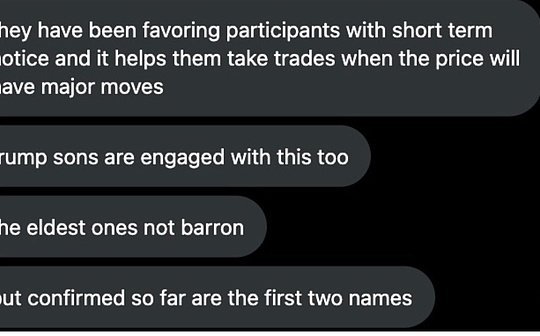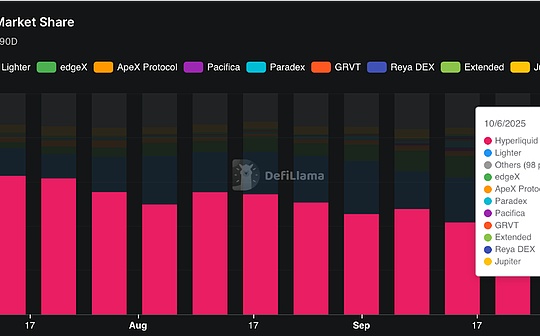
Author: danny; Source: X, @agintender
The serial liquidation caused by extreme leverage using altcoins as collateral is a systemic risk triggered by external shocks when the market structure is fragile.This article will analyze the mechanism behind it from the perspective of market makers and large investors pledging altcoins to lend stablecoins.
In ancient Greek mythology, there is a myth about chasing the sun and dying.
Icarus was a young man in Greek mythology who died chasing the sun.He and his father Daedalus were imprisoned by the King of Crete. Daedalus made two pairs of wings out of wax and feathers, allowing father and son to escape from the island.Daedalus warned his son not to fly too high when flying, but Icarus got carried away and flew too high, causing the wax on his wings to melt by the sun, and eventually fell into the sea and died.
If we draw an analogy, wings are leverage in the financial world, and flying too high is an original sin.
The catalyst for the 10.11 crash: the macroeconomic “black swan” that appeared in front of the powder keg
On October 11, 2025, the market encountered a sudden macro-negative: Trump announced that he would impose high tariffs on Chinese goods.The news instantly ignited risk aversion in global markets, causing investors to sell risky assets such as stocks and cryptocurrencies and flock to safe-haven assets such as the U.S. dollar and gold.
For a crypto market that has accumulated a lot of leverage and vulnerable positions, this is nothing less than a spark thrown into the powder keg.
First perspective: Market maker (MM)’s “neutral strategy” imbalance
Market makers play a key role in providing liquidity in the market.In theory, they earn the bid-ask spread through a “market neutral strategy” (simultaneously holding long and short positions to hedge risks) rather than betting on unilateral market trends.
-
The pursuit of capital efficiency: Market makers will not invest millions of dollars in real cash to build liquidity for each trading pair.The exchange allows them to pledge their crypto-assets (including a large number of altcoins), lend out stablecoins (such as USDT, USDC), and then use these borrowed stablecoins to implement market-making strategies.For example, if a certain altcoin worth US$1 million is pledged, a stablecoin of US$500,000 can be lent out based on a 50% pledge rate.
-
Hidden risk exposure: Under this model, although market makers may be “neutral” in the contract market, their balance sheets are not.Their collateralized position itself is a huge risk point.
-
The detonation process of 10.11:
-
Market sudden changes: News of Trump’s tariffs triggered a panic drop in the market, with all altcoin prices plummeting along with Bitcoin and Ethereum.
-
Collateral value decreases: The value of the altcoins pledged by market makers dropped rapidly, causing the health of their pledged positions to deteriorate sharply and approach the liquidation line.
-
double pressure: At the same time, their market-making positions in the contract market (which may include some long orders to maintain balance) are also facing losses or even liquidation due to the plummeting price.
-
liquidation initiated: When market makers are unable to make margin calls, the exchange’s liquidation system will forcefully take over their pledged altcoins and sell them on the spot market at any cost to repay the stablecoins they lent.
-
death spiral formation: The massive selling pressure in the spot market has further hit the price of altcoins.Since the contract price closely follows the spot price, this directly causes the contract price to plummet again, thereby triggering more contract positions, including those of the market maker himself and other traders in the market.
This creates a vicious cycle:Contract liquidation → Price drop → Collateral value drops → Collateral is liquidated by spot → Spot price falls further → Triggering more contract liquidation.
During the flash crash on October 11, the prices of many altcoins instantly returned to zero or close to zero, precisely because the liquidity protection mechanism of market makers completely failed under the impact of serial liquidations.
Second perspective: The dilemma of “holding currency to earn interest” among large altcoin owners
Large altcoin investors (giant whales) face similar dilemmas as market makers, but their original intentions and position structures are different.
-
Sunk costs and impatient capital: Many large investors bought a large number of altcoins in the middle and late stages of the bull market, expecting a hundredfold increase.However, the market has been slow to live up to expectations and their funds have been locked up in these illiquid assets for the long term.(such as Wbeth, Bnsol)
-
seeking additional income: In order to generate income from the accumulated funds, they took the same operation: pledged the altcoins they held on exchanges or DeFi protocols, lent stablecoins, and then used these stablecoins to conduct contract transactions, short-term speculation, or invest in other projects.
-
Positions that are already unhealthy: After a long period of sideways trading or negative decline, the health of pledged positions of many large investors has long been in a “sub-healthy” state.They may have become accustomed to hovering on the edge of the liquidation line, maintaining their positions with small margin calls.
The last straw of 10.11
-
external shock: The general decline triggered by the tariff incident has put their already fragile positions at risk.
-
Threat of dual variables: They are facing the attack of two core variables:
-
Loss on contract position: The contract orders they opened with the loaned stablecoins (most likely long orders) are losing money quickly.
-
A collapse in the value of collateral: This is even more fatal. Even if their contract positions can be held temporarily, the collateral as the foundation is being eroded.Once the value of the collateral falls below a certain threshold, the entire pledged position will be liquidated regardless of whether the contract position is profitable or not.
-
Same spiral, different protagonists: When liquidation occurs, the mechanism is exactly the same as for market makers: contract positions are liquidated in the futures market, and the altcoins used as collateral are sold off in the spot market.The liquidation of each large player became a bombshell that hit the market, accelerating the collapse of prices and triggering the liquidation of the next large player.This is equivalent to two liquidation lines happening at the same time, one is the market maker’s arbitrage robot, and the other is the liquidation engine.
Conclusion: A structural avalanche triggered by extreme leverage
The crypto market’s plunge on October 11 was ostensibly driven by macroeconomic news, but its underlying cause was the extreme leverage accumulated within the market, collateralized by high-risk altcoins.This model tightly binds the spot market and the contract market through mortgage lending, creating a highly fragile system.
-
risk resonance: Risks in a single market (such as contract losses) will be quickly transmitted and amplified to another market (spot selling), and vice versa, forming a strong resonance effect.
-
evaporation of liquidity: Under the stampede of serial liquidations, the buying orders in the altcoin spot market were instantly drained, causing the price to fall off a cliff and even briefly return to zero.
Under the current crypto market structure, even market makers with no directional risk and large long-term currency holders will put themselves and the entire market on the edge of systemic collapse because of their pursuit of ultimate capital efficiency and leverage returns.A seemingly unrelated external shock is enough to trigger an entire avalanche.






